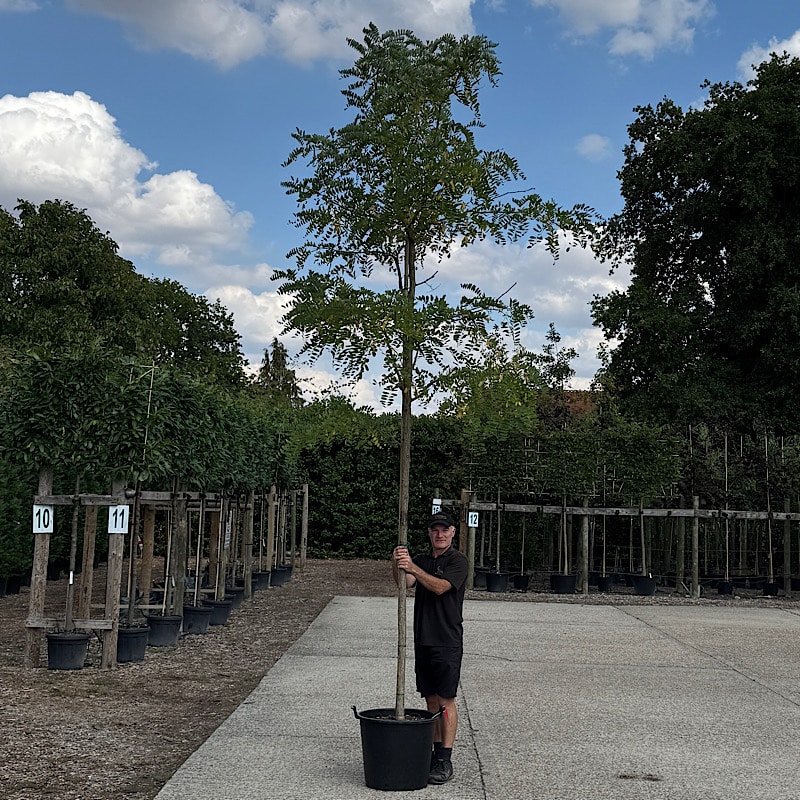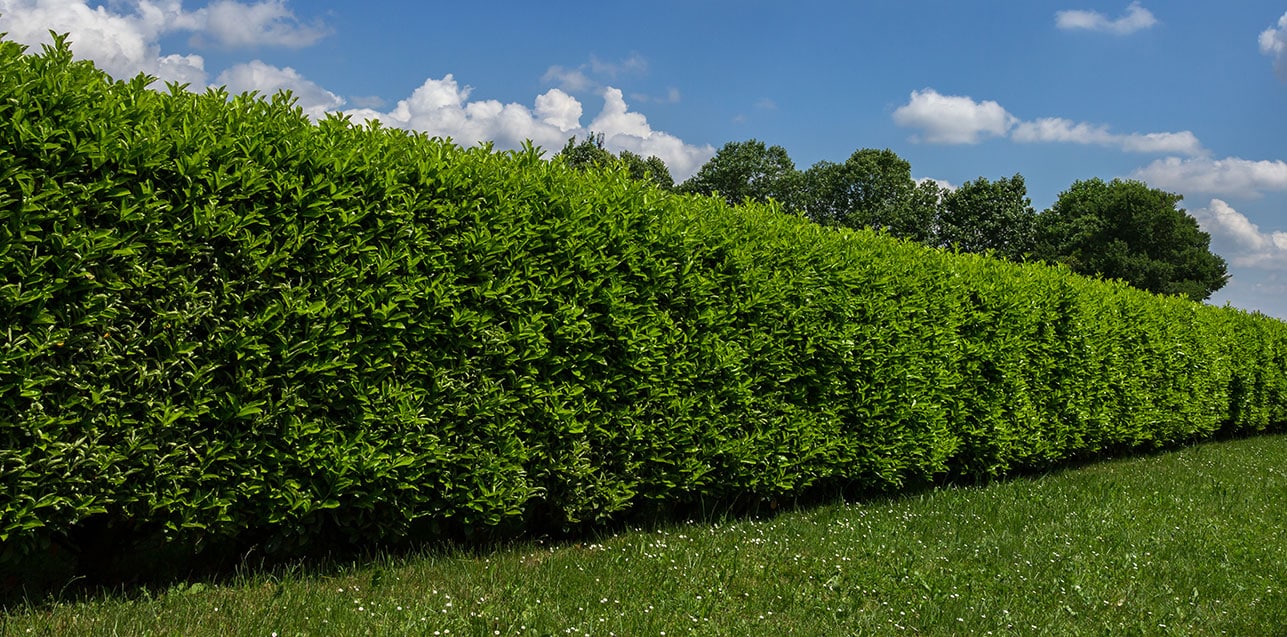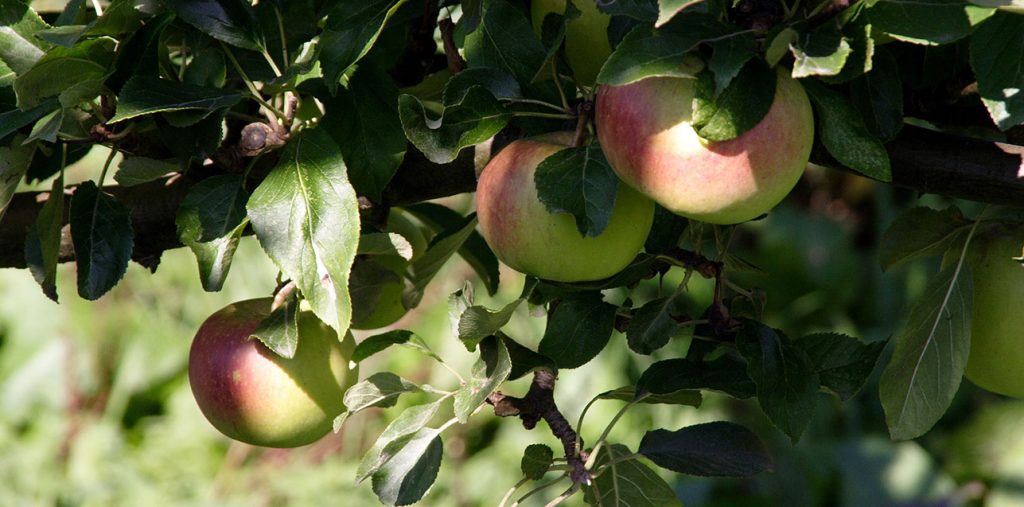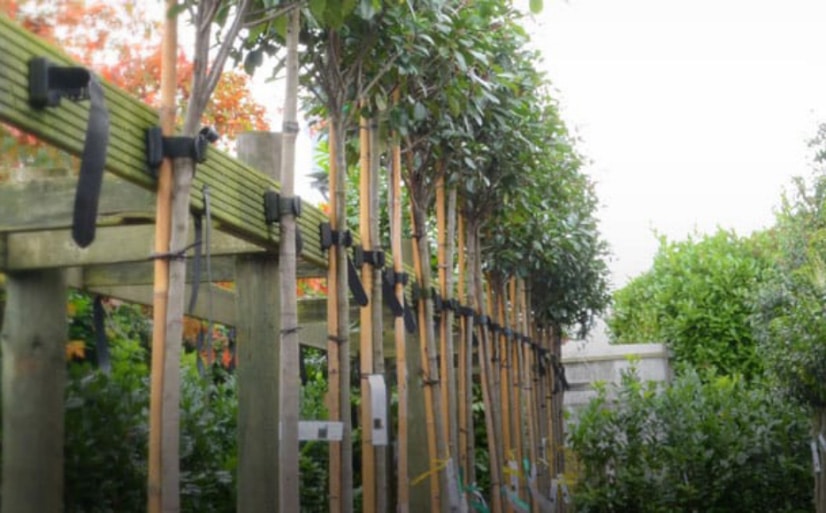Planting rowan trees is a smart way to add vibrant colour to your autumn garden. These trees light up the landscape with fiery reds, oranges and golds. Their berries also attract birds, adding life and movement to gardens. If you start planning early, you’ll enjoy a stunning display by the time leaves begin to fall. In this article, we’ll explore the best varieties for autumn colour, how to plant them, and tips for long-term care!
1. Sorbus ‘Joseph Rock’
‘Joseph Rock’ has pinnate green leaves that shift to red, orange, and purple in autumn. In spring, it produces flat clusters of creamy-white flowers. By autumn, bright yellow berries appear. An excellent choice for year-round appeal, this Sorbus works well in small gardens or tight spaces.
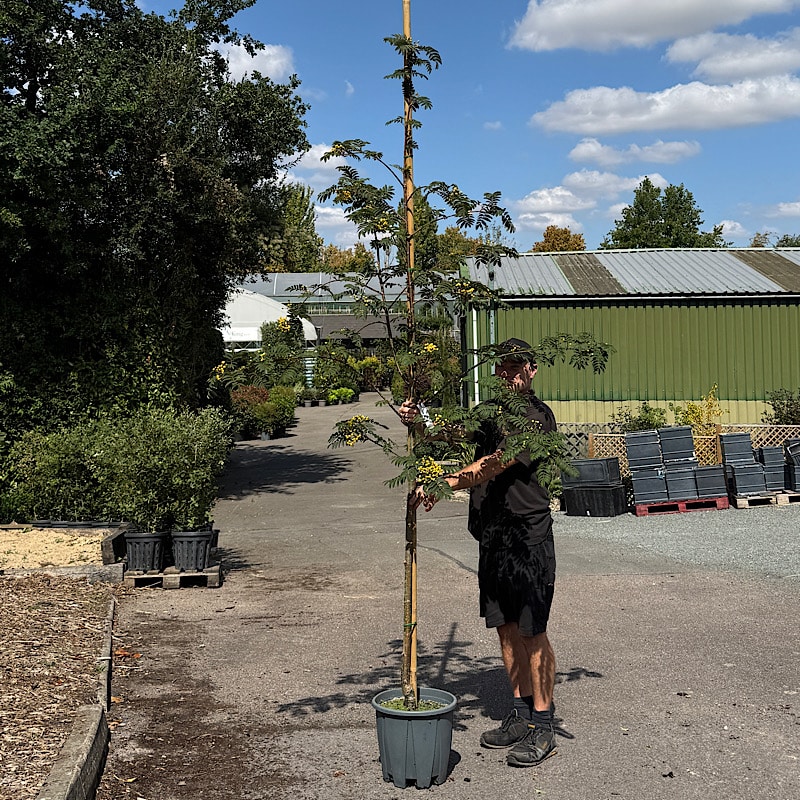
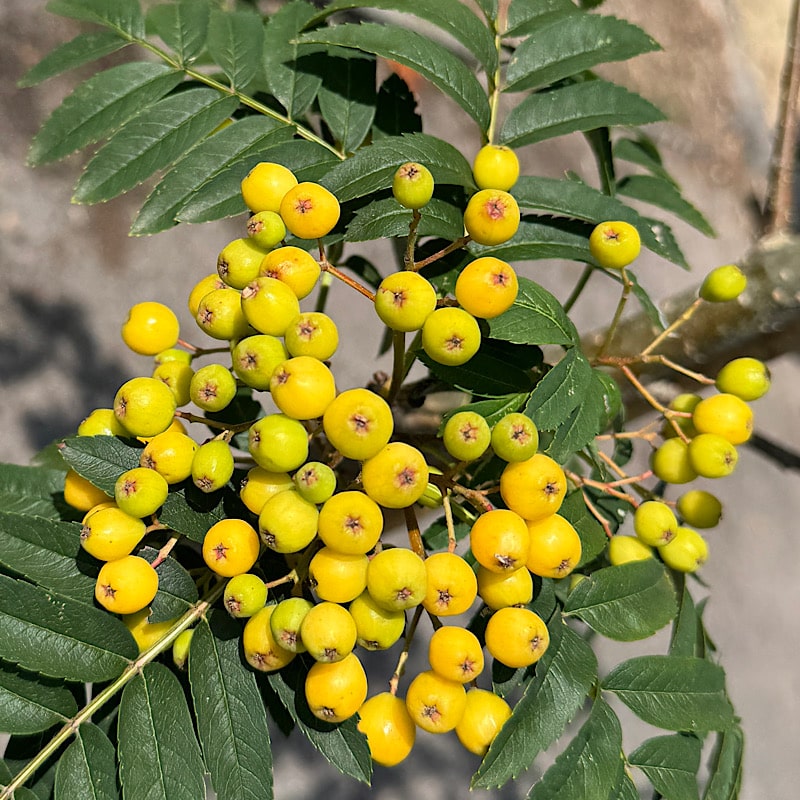
2. Sorbus hupehensis
Sorbus hupehensis has dark green, pinnate leaves that turn bright orange and red in autumn. In spring, it produces clusters of white flowers. Later in the season, red or orange berries appear. This rowan has an upright shape that becomes oval over time.
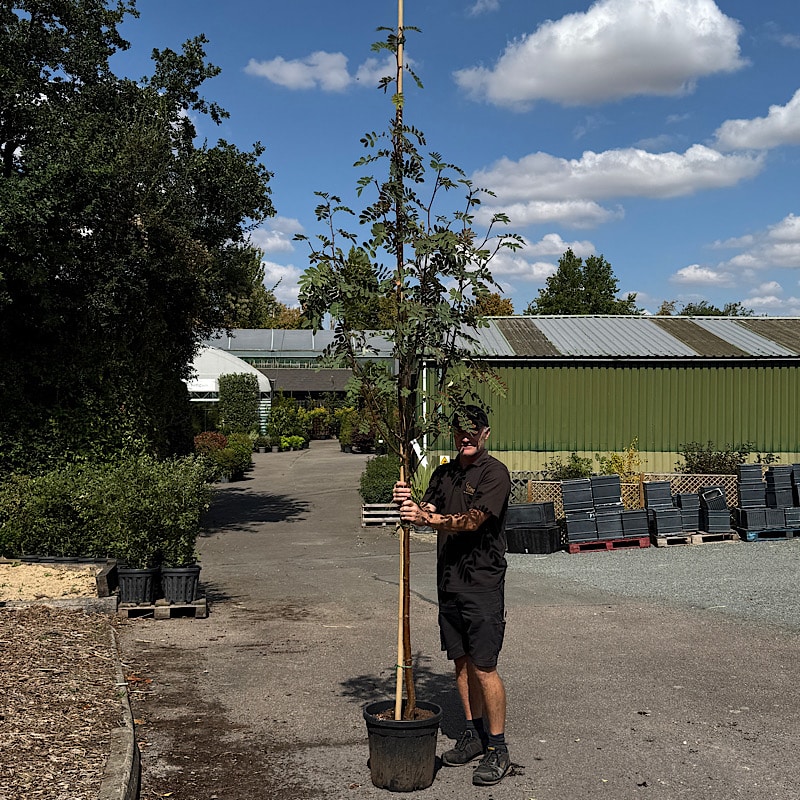

3. Sorbus vilmorinii
Vilmorin’s rowan has a striking appearance, with dark green leaves that turn orange, red, and purple in autumn. In spring, it also produces clusters of white flowers. By autumn, small red berries then appear. This rowan grows up to 5 metres tall. Its compact size make it a great choice for small gardens.
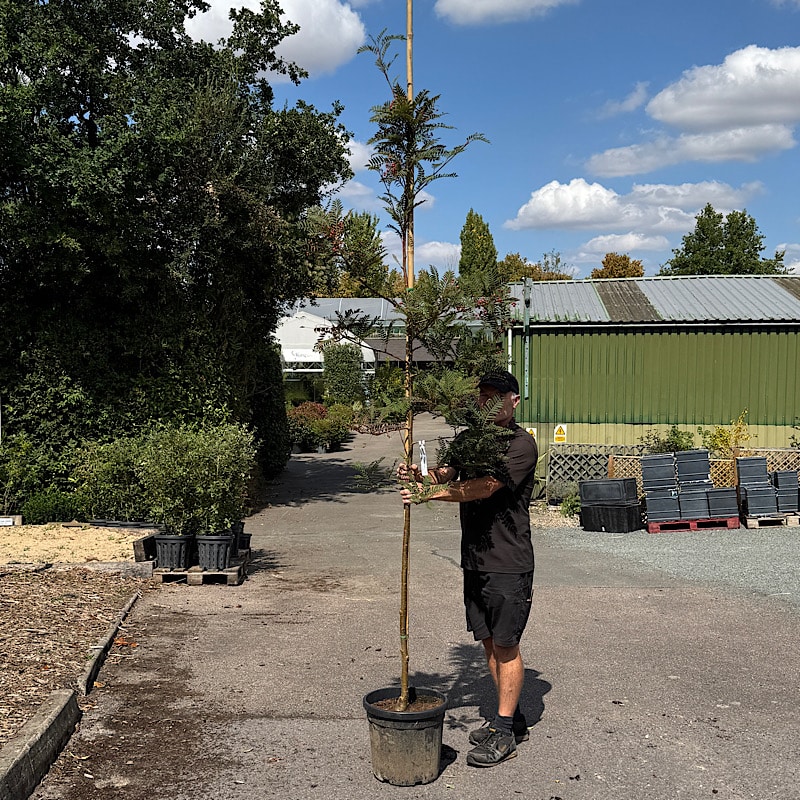
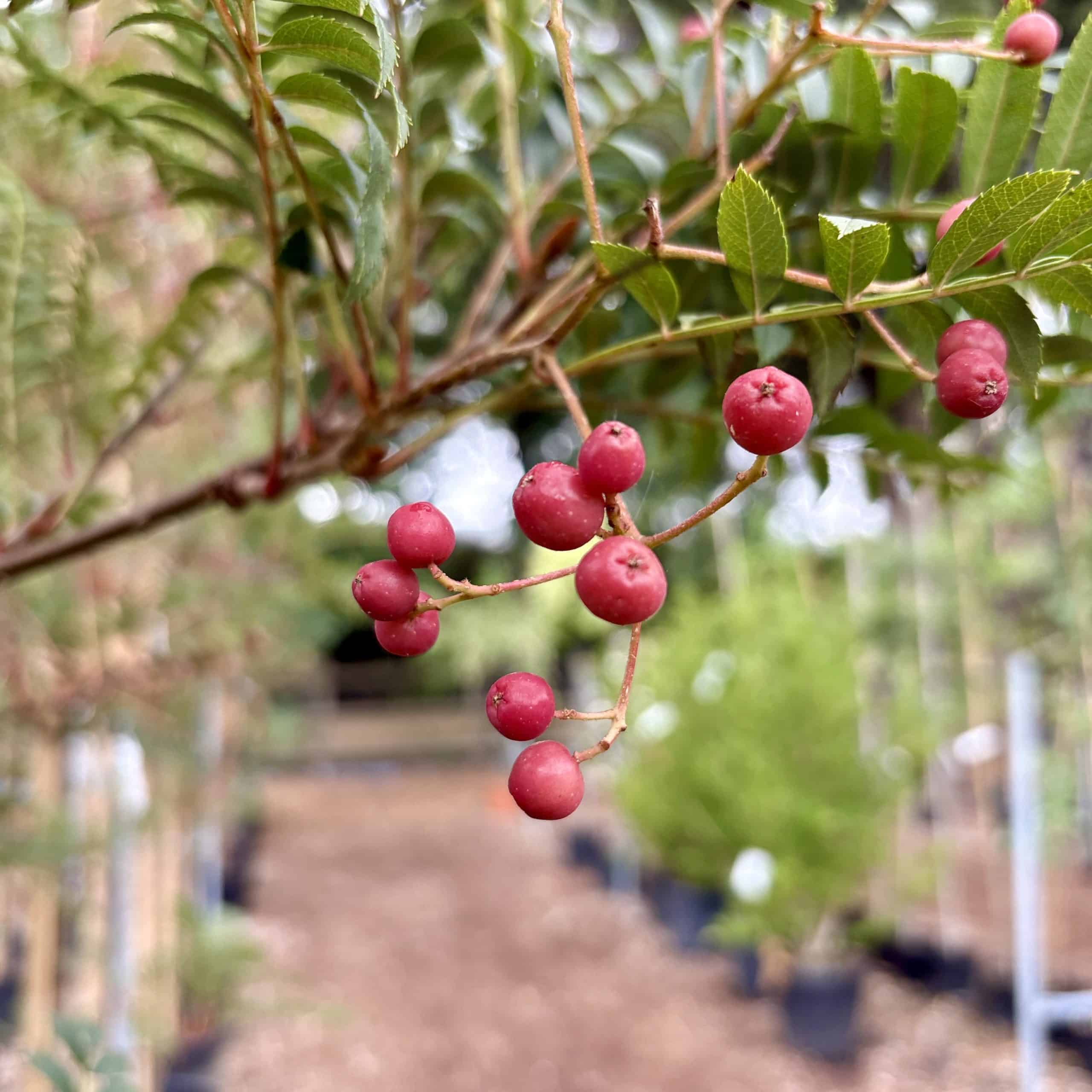
4. Sorbus ‘Kirsten Pink’
The Kirsten’s Pink rowan has green pinnate leaves with a grey-green underside, this foliage turns bright red in autumn. In spring, it also produces clusters of white flowers with a pink tint, followed by deep pink berries in autumn.This Rowan has a rounded to spreading shape, forming a crown up to 3 metres wide. Its seasonal interest makes it a standout ornamental tree.
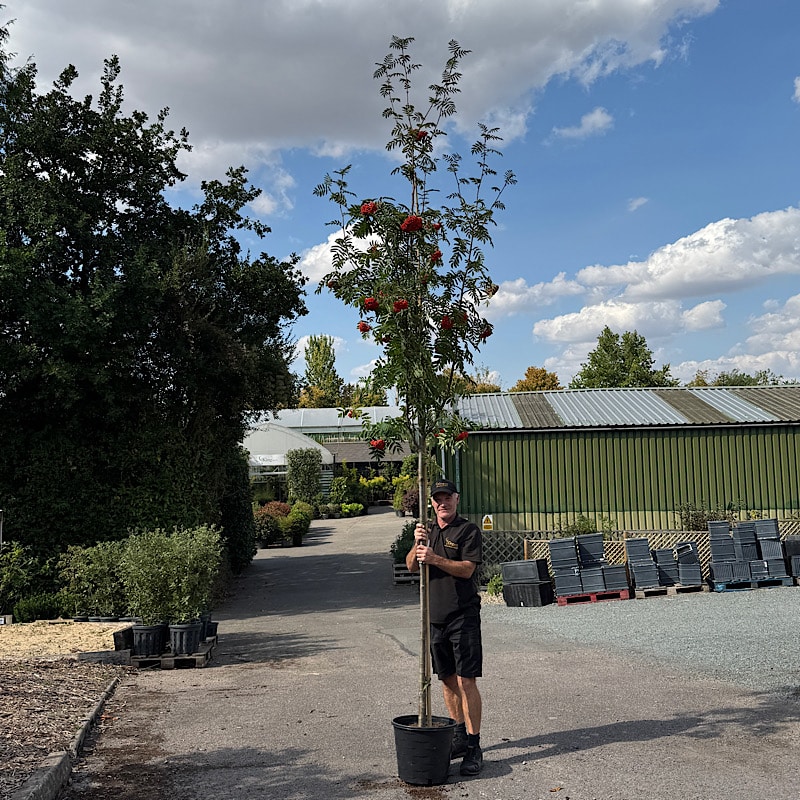
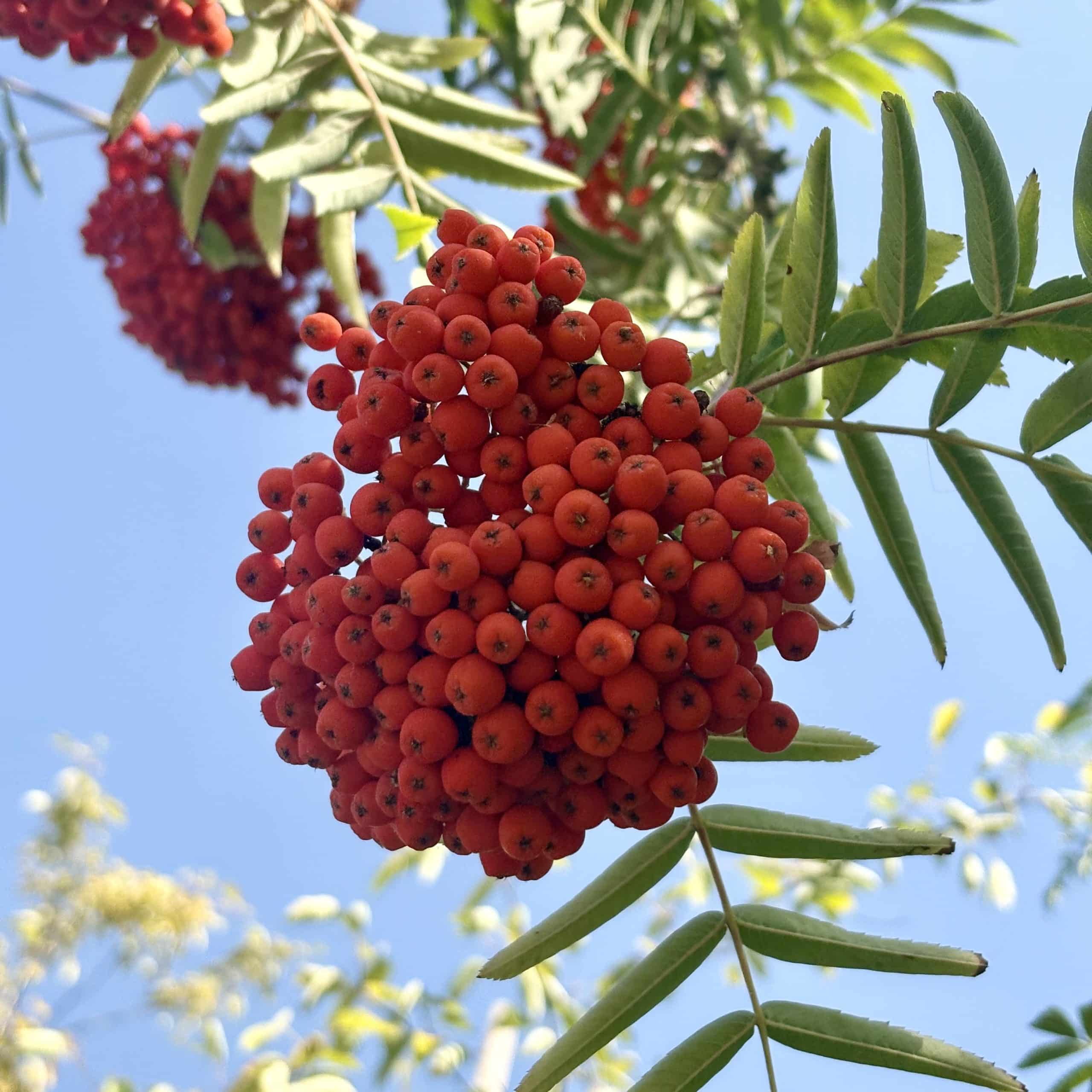
5. Sorbus ‘Cardinal Royal’
‘Cardinal Royal’ has green foliage that turns fiery shades of orange and red in autumn. It also produces clusters of white flowers and bright red berries in autumn. An excellent choice for adding bold colour to landscapes, this rowan has a compact form that makes it ideal for small gardens.
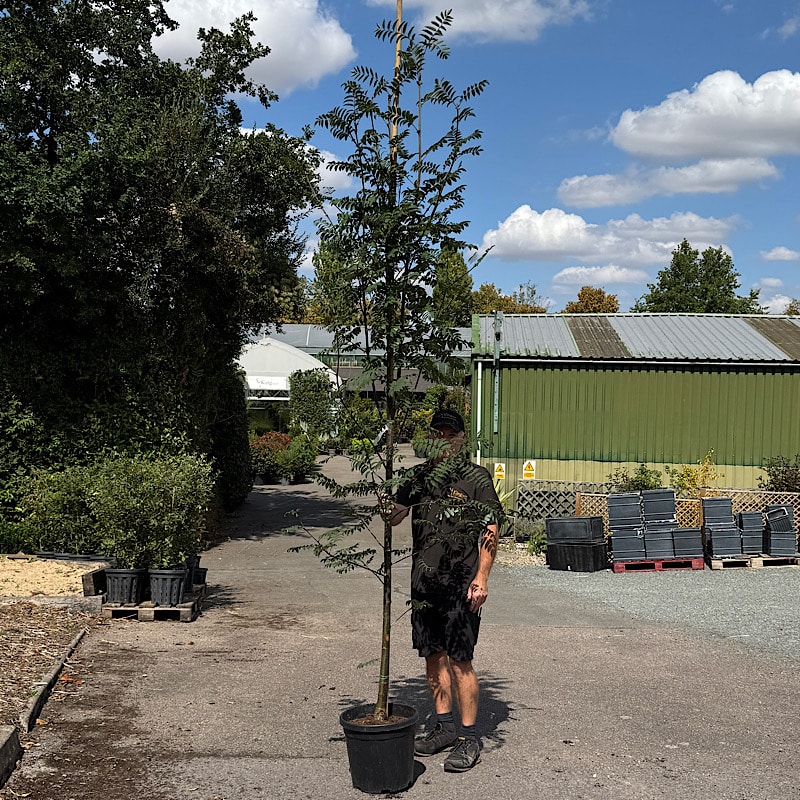
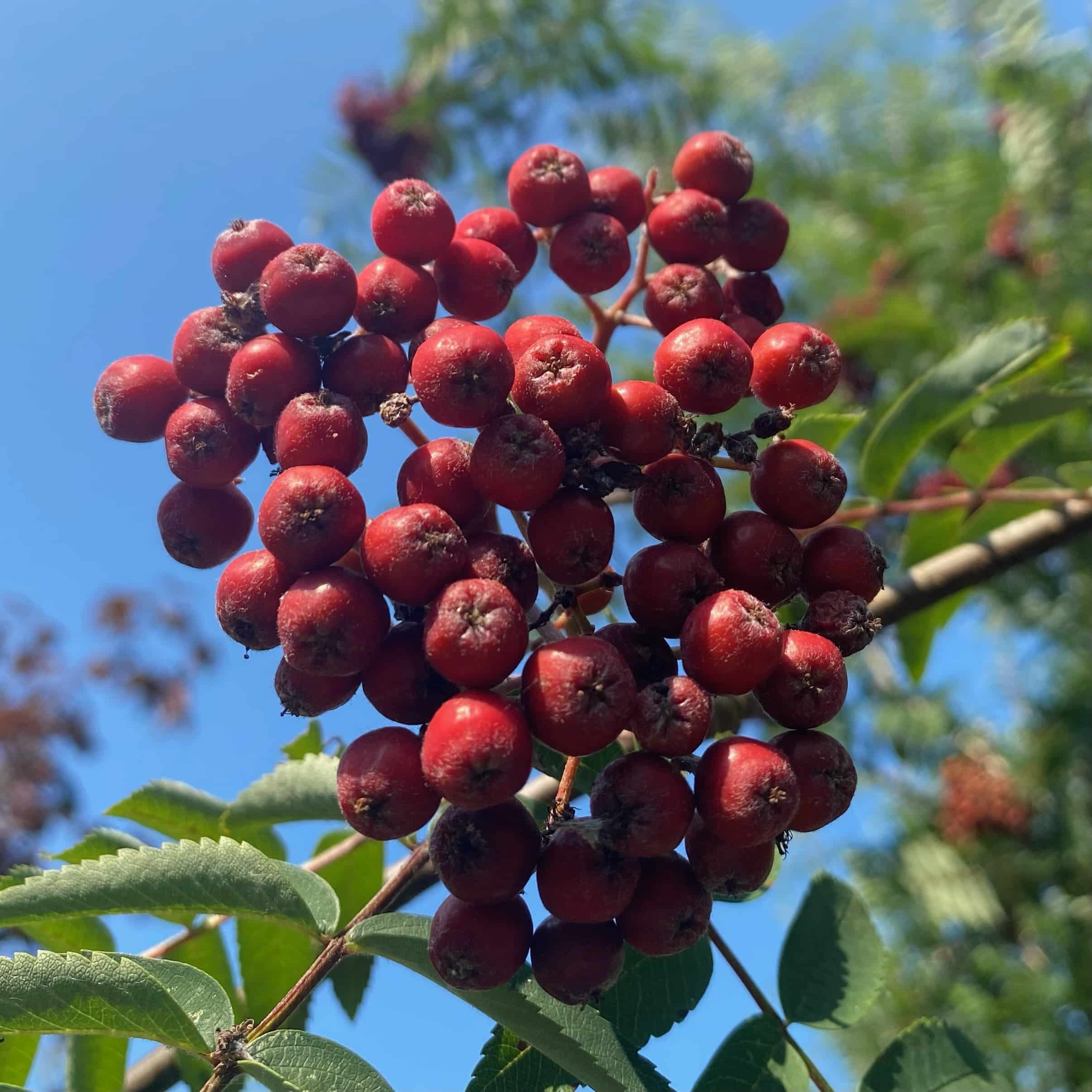
6. Sorbus aucuparia
Sorbus aucuparia is a fast-growing, medium-sized deciduous tree. It starts with an upright shape, but becomes open and rounded over time. In spring, it produces clusters of white flowers. By autumn, bright red berries appear. Reaching a mature height of 10m, it’s a versatile choice that adds strong ornamental value to gardens and landscapes.
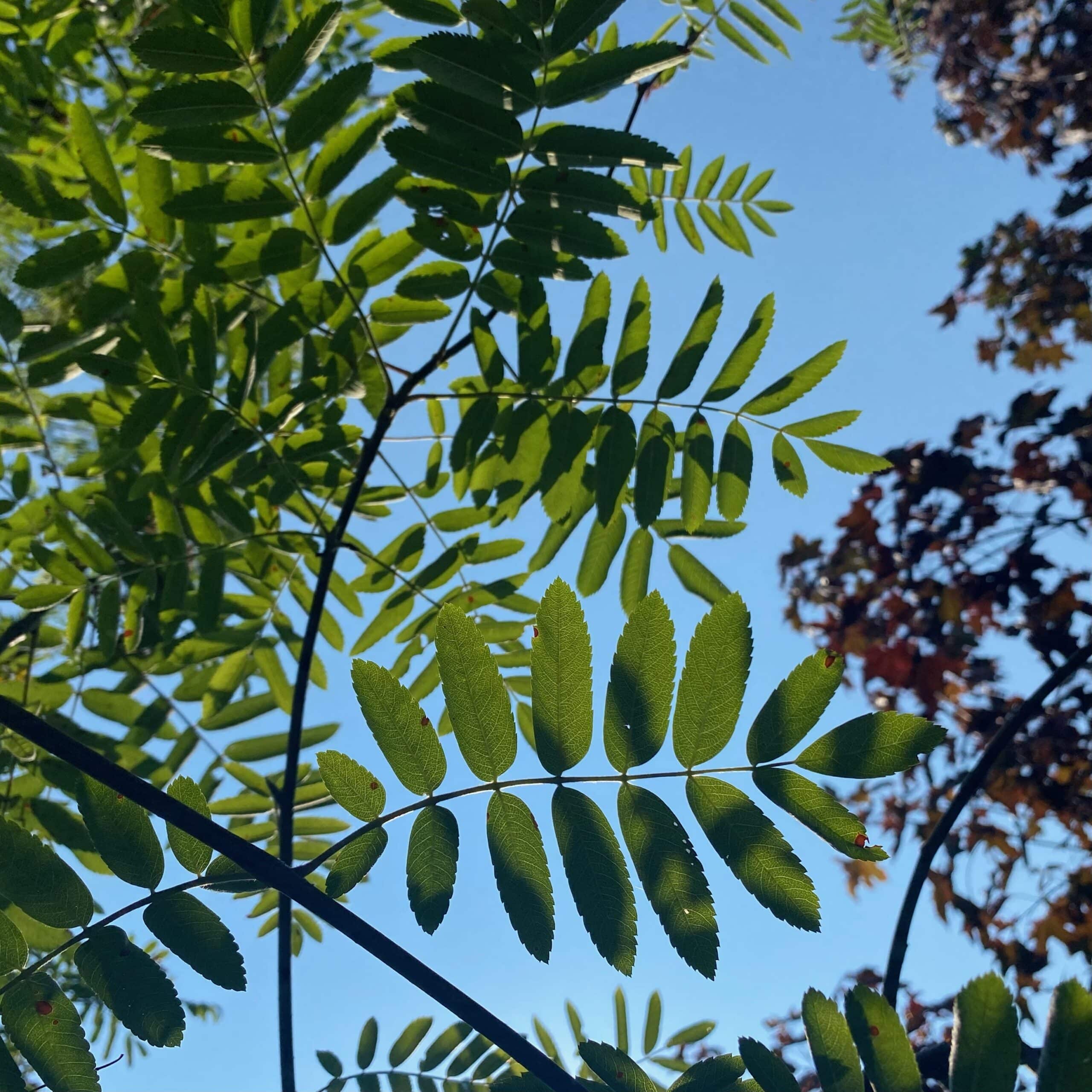
Robinia
Looking for something different from a rowan? Robinias make a great alternative!
Robinia pseudoacacia ‘Semperflorens’ is a medium-sized deciduous tree with a narrow, oval crown that becomes broader and more open with age. It grows to a mature height of 10 to 15 metres, making it well suited for medium to large gardens, parks, or urban areas.
This Robinia has dark green pinnate leaves with a similar texture to rowan. It also has white, pea-like flowers in summer and flat brown seed pods appear in autumn. These give the tree a unique look and add seasonal interest.
Robinia pseudoacacia ‘Frisia’ has an upright shape when young. As it matures, its thorny branches spread outward to form a wide, oval crown. ‘Frisia’ stands out for its rich, golden-yellow pinnate leaves. In summer, it produces hanging clusters of white, pea-like flowers. By autumn, flat brown seed pods appear, adding texture and seasonal interest. Its striking foliage and seed pods make it a strong alternative for autumn colour and structure.
